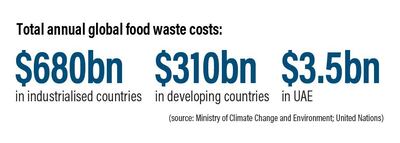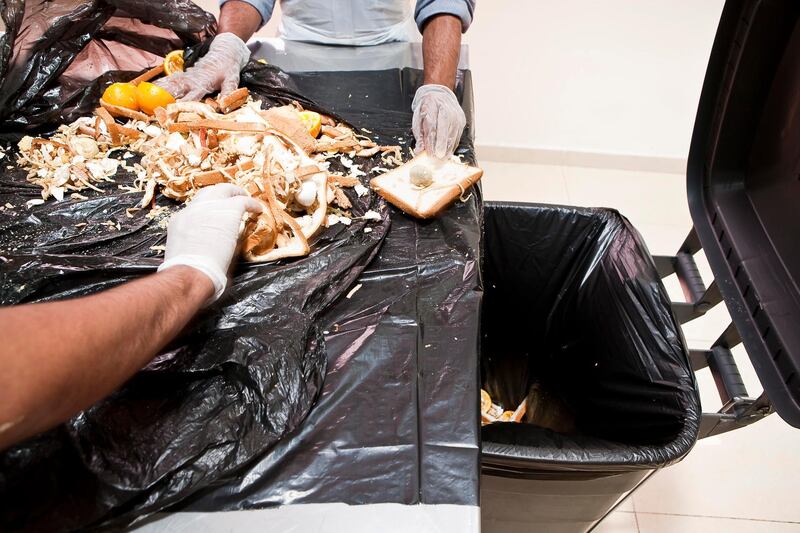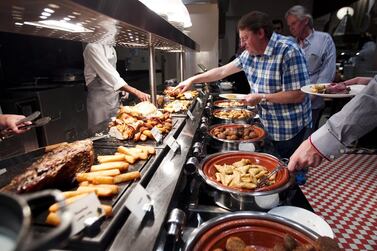As debate continues to grow around the climate crisis, food waste has been pitted as one of the main culprits contributing to the global temperature rise.
Thirty one per cent of greenhouse gas emissions are produced as a result of food waste dumped in landfills, according to the United Nations, and roughly one third, or 1.3 billion tonnes, of food produced around the world is wasted each year.
In the UAE alone, the Ministry of Climate Change and Energy previously said food waste costs the country Dh13 billion annually.
Slowly but surely, countries around the world are beginning to introduce measures to tackle the issue.
The global ambition to halve food waste by 2030 is a one of the key priorities of the UAE.
Data from the Food Sustainability Index 2016, developed by The Economist Intelligence Unit, revealed that the UAE, and the Arab region as a whole, were among some of the poorest performers when it came to reducing food loss and waste.
But the country has made a pledge to turn things around. The UAE was among 193 countries that signed up to the United Nations’ Agenda for Sustainable Development, which aims to have zero world hunger within the next decade.
Mariam Al Mehairi, Minister of State for Food Security, invited the UAE general public and hospitality sector to commit to reducing food waste, calling them a “catalyst for change”.
And the Government of the UAE is also taking steps to develop a regulatory framework to enable recycling of waste, mainly foodstuff, into compost over the next decade.
Here, using official statistics published by the UN and The Economist Intelligence Unit, we look at the global food waste crisis.
Bad habit: which countries waste the most food per person, annually?
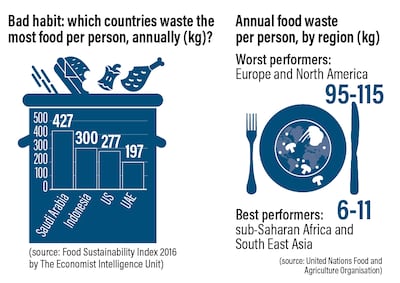
As the figure shows, two GCC states have been listed among the poor performing countries in reducing food loss and waste. Residents in the UAE waste an average of 197kg of food each year – the equivalent weight of three adult women – and Saudi Arabia more than doubles that figure. The findings put a spotlight on the region’s need to ramp up efforts towards combating such a timely issue.
The chart shows annual food waste is most prevalent among developed countries. The United Nations stated this is down to the fact that consumers in rich countries generally buy more food than they need and fail to plan their food purchases properly. Ultimately, this leads to food being wasted due to expiration dates being passed.
What kind of food ends up in the bin?
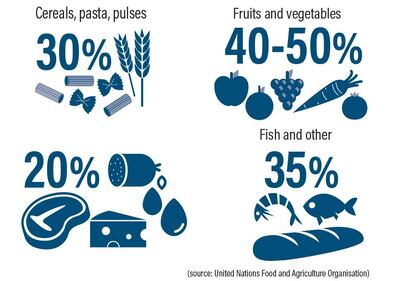
The main reasons for food loss and waste
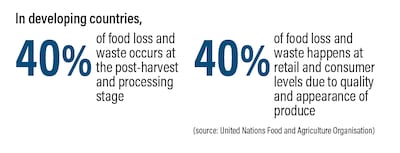
This figure paints a picture of the amount of food wasted before it even reaches our plates. In developing countries, lack of proper farming infrastructure and manpower can contribute towards food waste, with fruit, vegetables and crops left unharvested. Crop damage caused by natural disasters can also be blamed. In developed countries, many items get rejected by retailers and consumers purely for aesthetic reasons. Better cold storage and infrastructure when transporting produce would help reduce these losses.
How much does food waste cost the world?
